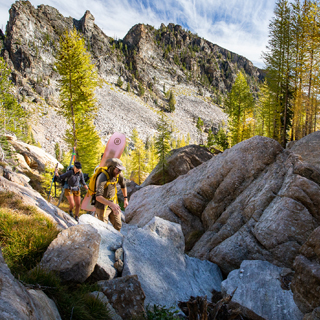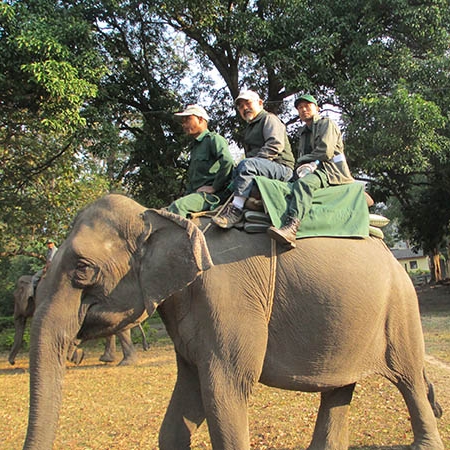Retired Faculty
Ronald Wakimoto
Emeritus Professor of Forest Fire Science
Contact
Personal Summary
Dr. Ronald H. Wakimoto is Professor Emeritus, Forest Fire Science, at the University of Montana, Missoula. He retired at the end of June, 2015. He received his B.S. in Forestry, M.S. and Ph.D. in Wildland Resource Science all from the University of California at Berkeley. Ron began his faculty career at the University of California, Berkeley in 1976 and joined the University of Montana faculty in 1982, teaching and conducting research in wildland fire management. He taught academic courses in wildland fire management, fuel management, fire ecology, and urban forestry. Throughout his time at UM he worked to support, mentor, and advise students of color. Dr. Wakimoto has conducted research on diverse topics including the effectiveness of fuel management treatments, smoke quantity and quality from smoldering combustion, and crown fire spread.
In 1988 and 1989 Dr. Wakimoto was one of two academics to serve as technical advisors to the National Fire Policy Review Team following the Yellowstone fire events. In his career Dr. Wakimoto has given testimony to the US House of Representatives three times concerning wildfire policy. In 2004 Dr. Wakimoto was elected a Fellow by the Society of American Foresters. At the national level of SAF he served four years as the Chair for Student Affairs and spent six years serving on the SAF Committee on Accreditation. In 1990 he was Montana SAF’s “Forester of the Year”. From 2005 to 2010 he served as the Chair of the Department of Ecosystem and Conservation Sciences at UM. From 2006 to the present Dr. Wakimoto has taught short-courses on fire ecology, prescribed burning, disaster preparedness, fire management strategy development, and wildland fire suppression training in the Kingdom of Bhutan, high in the Himalayas. At the end of 2010 he stepped down as Department Chair and returned to Bhutan for a 5-month sabbatical leave from the University. In 2014, Dr. Wakimoto returned to conduct more fire training in Bhutan. In 2018 he did more fire training and conducted prescribed burns across the Kingdom. In Dr. Wakimoto’s fire management capacity building efforts he has given fire training to hundreds of Bhutanese foresters, government administrators, Army, Police, Disaster personnel and fire volunteers who represent every fire-prone dzongkhag in the country. In May, 2014, he was awarded the H.H. Biswell Lifetime Achievement Award by the Association for Fire Ecology. In 2015 he received the George M. Dennison Presidential Faculty Award and delivered the Mike and Maybelle Hardy Fire Management Lecture. In 2016 he was recognized as a Forestry Pioneer by the Montana Department of Natural Resources and Conservation.
Education
B.S. Forestry, Univ. of California, Berkeley 1970
M.S. Wildland Resource Sci., Univ. of California, Berkeley 1971
Ph.D. Wildland Resource Sci., Univ. of California, Berkeley 1978
Research Interests
Here is a list of recent research:
- Validation and Calibration of FARSITE Fire Area Simulator for Yellowstone National Park
- Temporal distribution of biomass burning in Central Africa
- Content analysis of wildland firefighter fatalities and entrapments
- Evaluation of fuel management treatments following the 1994 wildfire season on the Kootenai National Forest.
- Historic Fire Regimes and Change Since European Settlement on the Northern Mixed Prairie
- Social Acceptability of Fuel Management Treatments
- Smoke Production and Quality from Smoldering Combustion in Forest Fires
- Modeling the Initiation of Crown Fires
Selected Publications
Agee, J.K., R.H. Wakimoto and H.H. Biswell. 1978. Fire and fuel dynamics of Sierra Nevada conifers. For. Ecol. Manage.1:255-265.
Barrett, T.M., J.G. Jones and R.H. Wakimoto. 2000. Forest Service spatial information use of planning prescribed fires. Western J. of Applied Forestry. 15(4):1-8.
Brown, J.K. R.W. Mutch, C.W. Spoon and R.H. Wakimoto. Eds. 1995. Proc. Symp. On Fire in Wilderness and Park Management. USDA For. Serv. Gen. Tech. Rep. INT-GTR-320. 283pp.
Close, K.R. and R.H. Wakimoto. 1995. GIS and fire management planning on the urban/wildland interface. IN: Proc. Symp. Fire in Wilderness and Park Management. USDA For. Serv. Gen. Tech. Rep. INT-GTR-320.
Cruz, M.G., R.H. Wakimoto, and M.E. Alexander. Modeling the initiation and spread of crown fires. IN: Proc. 2000 National Congress on Fire Ecology, Prevention and Management. Nov. 27-Dec. 2, 2000. San Diego, CA.
Cruz, M.G., Alexander, M.E., and Wakimoto, R.H. 2004. Assessing canopy fuel stratum characteristics in crown fire prone fuel types of western North America. International Journal of Wildland Fire 12:39-50.
Cruz, M.G., Alexander, M.E., and Wakimoto, R.H. 2004. Modeling the likelihood of crown fire occurrence in conifer forest stands. Forest Science 50(5):640-658.
Cruz, M.G., Alexander, M.E. and Wakimoto, R.H. 2005. Development and testing of models for predicting crown fire rate of spread in conifer forest stands. Canadian Journal of Forest Research 35:1626-1639.
Cruz, M.G., Alexander, M.E. and Wakimoto, R.H. 2005. Stand structure modification to reduce fire potential: simulation vs. reality. IN: Proc. 5th National Forestry Congress sponsored by the Portuguese Society of Forest Sciences. May 16-19, 2005, Viseu Portugal (not refereed).
Cruz, M.G., Alexander, M.E. and Wakimoto, R.H. 2005. Development and testing of models for predicting crown fire rate of spread in conifer forest stands. Canadian Journal of Forest Research. 35:1626-1639.
Cruz, M.G., Butler, B.W., Alexander, M.E., Forthofer, J.M. and Wakimoto, R.H. 2006. Predicting the ignition of crown fuels above a spreading surface fire. Part I: model idealization. International Journal of Wildland Fire 15:47-60.
McAlpine, R.S. and R.H. Wakimoto. 1991. The acceleration of fire from point source to equilibrium spread. Forest Science 37(5):1314-1337.
Radtke, K. W-H. and R.H. Wakimoto. 1981. The effects of southern California's fire climate on vegetation and people. IN: Proc. Ninth International Congress of Biometeorology, Sept. 23-Oct. 1 ,1981, Osnabrueck and Stuttgart-Honenheim, Germany.
Skinner, J. and R.H. Wakimoto. 1995. Using a geographical information system for presuppression planning of lightning-ignited wildland fires in Missoula, Co., Montana. IN: Proc. Symp. Fire in Wilderness and Park Management. USDA For. Serv. Gen. Tech. Rep. INT-GTR-320. p. 265.
Wakimoto, R.H. 1990. National Fire Management Policy. J. For. 88(10): 22-26.
Wakimoto, R.H. 1992. Fire at the wildland/urban interface: policy implications. IN: Symp. on Fire in Pacific Northwest Ecosystems: Exploring Emerging Issues. Jan. 21-23, 1992. Oregon State Univ., Corvalis, OR.
Wakimoto, R.H. 1997. Testimony to the U.S. House Agriculture Committee. Congressional Record, July 15, 1997. The subject was Wildland Fire Policy.
Wakimoto, R.H. 2000. Testimony to U.S. House subcommittee on Forests and Forest Health. Congressional Record, September 16, 2000. The subject was the causes of the Bitterroot Valley Fires of 2000.
Wakimoto, R.H. 2001. Testimony to U.S. House subcommittee on Forests and Forest Health. Congressional Record, July 31, 2001. The subject was the implementation of the National Fire Plan.
Xanthopoulos, G. and R. H. Wakimoto. 1991. Development of a wildland crown fire initiation model. pp. 281- 290. IN: Proc. of the 11th Conf. of Fire and Forest Meteorology. April 16-19, 1991. Soc. of Am. Foresters, Bethesda, MD.
Xanthopoulos, G. and R.H. Wakimoto. 1993. A time to ignition-temperature-moisture relationship for branches of three western conifers. Can. J. For. Res. 23(2):253-258.

